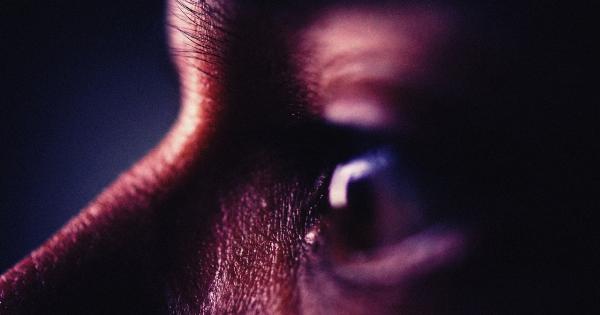Scientists have long marveled at the exceptional olfactory senses possessed by various animals, which prompted efforts to harness their abilities for practical applications.
Dogs, in particular, have been widely recognized for their remarkable ability to detect diseases, including cancer, by simply sniffing biological samples or even human breath. However, recent studies have revealed that insects, such as bees and fruit flies, might possess an even greater potential for cancer detection.
These tiny creatures, with their extraordinary sense of smell, could potentially revolutionize cancer diagnostics and lead to earlier and more accurate detection. This article explores the fascinating research that supports the idea that insects may surpass dogs in cancer detection.
The Power of Canine Cancer Detection
For decades, dogs have played a crucial role in various fields, from search and rescue operations to sniffing out drugs and explosives.
Their extraordinary sense of smell, with an estimated 220 million olfactory receptors compared to a human’s meager 5 million, allows them to detect subtle scents undetectable to humans. This exceptional olfactory prowess has made them invaluable in detecting diseases.
Remarkably, dogs have been found to successfully identify cancer in biological samples, such as urine, breath, and even tissue samples.
Numerous studies have shown that trained canines can sniff out specific cancer markers accurately, often outperforming conventional laboratory tests. Their accuracy and early detection potential have sparked great interest in utilizing canines for cancer screening and diagnostics.
The Rise of Insect Cancer Detection
While dogs have undoubtedly demonstrated their impressive cancer-detection abilities, recent studies have sought to explore whether other animals could perform even better.
Enter the humble insect, a creature vastly different from dogs in terms of size and biology, but with a sense of smell that rivals or even surpasses that of our furry friends.
One particularly promising study conducted by researchers from the University of Konstanz in Germany investigated the ability of Western honeybees to detect cancer.
In a series of experiments, bees were trained to associate the scent of a sugar solution with a reward. Subsequently, they were exposed to various samples, including those from healthy individuals and patients with lung, skin, and ovarian cancer.
Astonishingly, the bees consistently and accurately detected cancer samples by extending their proboscis – the tube-like structure they use to drink nectar – as if expecting to find the sugar reward.
In another groundbreaking study, scientists from the University of California, San Diego, found that fruit flies could be trained to detect breast cancer cells.
By conditioning the flies to associate cancerous samples with heat and other stimuli, they were able to demonstrate that the insects actively avoided cancerous cells. This avoidance behavior not only proved reliable but also allowed the researchers to precisely identify the specific compounds in the samples that attracted or repelled the flies.
Advantages of Insect-Based Cancer Detection
The potential advantages of using insects, rather than dogs, for cancer detection are numerous. Firstly, insects are considerably smaller and easier to handle than dogs, making them ideal for mass screening and diagnostics.
Their diminutive size also allows for more controlled experiments in laboratory settings.
Additionally, insects have a much shorter lifespan compared to dogs, which means they can be bred and trained more rapidly.
The shorter turnover time allows for more efficient research and potential widespread implementation of insect-based detection methods.
Furthermore, insects are less expensive to maintain and require less specialized care than dogs.
While dogs necessitate regular training and veterinary care, insects have lower requirements for specialized training and can be easily reared in laboratory conditions.
Progress Towards Practical Application
The success of insect-based cancer detection in research settings has led to significant interest in translating these findings into practical applications.
Scientists are actively working towards developing innovative technologies and methodologies for insect-based cancer screening.
One approach involves utilizing electronic sensors that detect the odorant receptors in insects. By mimicking the olfactory systems of bees or fruit flies, these sensors could potentially amplify the sensitivity and accuracy of cancer detection.
The development of portable, handheld devices could revolutionize cancer diagnostics, allowing for non-invasive and rapid screenings in various settings.
Additionally, advancements in machine learning and artificial intelligence have opened new possibilities for insect-based cancer detection.
By training algorithms to identify specific patterns in the behavior of insects when exposed to cancer samples, these technologies could facilitate automated and efficient cancer screening on a large scale. Such advancements could complement or even replace traditional laboratory tests.
Potential Challenges and Limitations
Although the prospect of using insects for cancer detection is exciting, there are several challenges and limitations that must be addressed. Firstly, there is still much to learn about precisely how insects detect cancerous cells or compounds.
Understanding the mechanisms underlying their exceptional olfactory capabilities can aid in refining detection methods and increasing accuracy.
Another challenge lies in ensuring the consistency and reliability of insect-based cancer detection.
Training insects to recognize specific cancer types or developing sensors that can differentiate between various cancer markers poses difficulties that require further investigation and experimentation.
Furthermore, public acceptance and perception of insects in healthcare settings must be addressed. While dogs have already gained widespread acceptance for various roles in society, insects may face initial skepticism and hesitation.
Educating the public about the scientific advancements and benefits of insect-based cancer detection can help overcome these potential barriers.
A Promising Future
The field of insect-based cancer detection is still relatively new, but the preliminary results are extremely promising.
As scientists continue to uncover the intricate mechanisms underlying insects’ olfactory systems, the potential for early and accurate cancer detection grows.
Insect-based technology could revolutionize cancer diagnostics, allowing for affordable, non-invasive, and widespread screenings.
The speed of insect training and the ease of their maintenance make this approach highly scalable and adaptable in various healthcare settings.
While dogs will undoubtedly continue to be invaluable in various roles, including cancer detection, the captivating world of insects offers a glimpse into an alternative future.
These tiny creatures, which have often been underestimated, possess remarkable abilities that could eventually surpass even the best-trained canine noses.
























